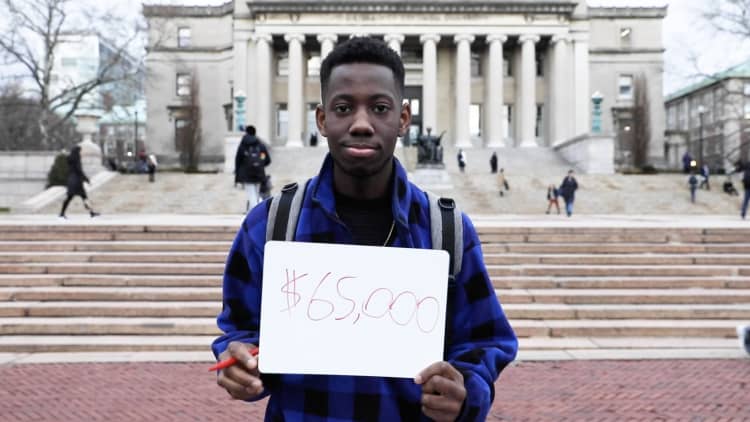Wednesday afternoon the House passed a $1.9 trillion stimulus bill, now expected to be signed by President Joe Biden by the weekend. The so-called American Rescue Plan increases the child tax credit, provides $30 billion for emergency rental assistance, funds a third stimulus payment and extends boosted unemployment benefits.
The bill also includes nearly $40 billion for higher education — $39,584,570,000 to be exact.
These funds are intended to extend the Higher Education Emergency Relief Fund through September 2023. Here's where that money is going according to the latest version of the bill:
Colleges without million-dollar endowments
The Higher Education Emergency Relief Fund provides support to thousands of struggling colleges and students with a specific emphasis on schools that have endowments worth less than $1 million.
The legislation dictates that schools that receive assistance must use a portion of the funds to "implement evidence-based practices to monitor and suppress coronavirus in accordance with public health guidelines" and specifically indicates funds shall not be used to support capital projects (such as the construction of new buildings or fancy dorms).
The formula for determining how much each school receives is based on the relative share of students receiving federal Pell Grants a college enrolls.
Over 3,000 schools, including many historically Black colleges and universities, received funds through the HEERF program when the second stimulus bill was passed in January. You can find out if your school previously qualified for HEERF, and how much they received, here.
Financial aid
The latest version of the bill suggests that schools must use at least 50% of their received funds to provide emergency need-based financial aid grants to students. Colleges are permitted to use these funds for any component of a student's cost of attendance.
"In addition to requiring colleges to use at least half of the HEERF for emergency financial aid grants to students, these colleges are required to conduct outreach to students about the opportunity to appeal for more financial aid due to the recent unemployment of a family member or other special circumstances," says Mark Kantrowitz, higher education expert and author of the bestselling book, How to Appeal for More College Financial Aid.
Students should sure to indicate any experiences with unemployment when they complete the Free Application for Federal Student Aid, otherwise known as the FAFSA, which opens Oct. 1.
"This is really money focused on students, focused on their parents, focused on educators," said PBS White House correspondent Yamiche Alcindor. "This is really, President Biden says, aimed at really trying to get education rolling in this country and trying to make sure that people don't fall through the gaps as we continue to weather this pandemic."
Don't miss:



